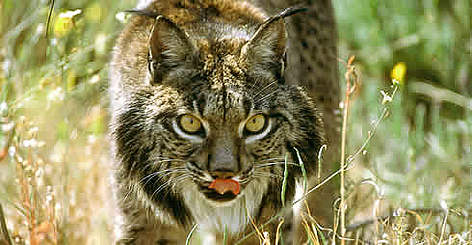A good call by the organisers made for a lovely day of flying 75km to the south east under a gorgeous sky. The cool moist air was trapped on the Celorico side of the mountains so we raced up to Azinha again where healthy clouds and a reasonable cloud base provided the entertainment. The start caused a few problems for some as we had to cross over a blue hole and wait on the north side of a ridge. Not everyone managed to get to cloud base but two main groups separated by about 2km converged to the course line favouring the cloud streets. It was clear altitude was important today so the highest pilots dominated the race.
The lead group suffered some serious sink 20km out from goal allowing the lag-gaggles to make up some time bunching the field up yet again. A westerly cross-down-wind strengthened as we reached goal. Ten minutes separated the first forty eight pilots after two hours of flying. This no longer amazes me as it has become the default result. It seems to happen irrespective of the venue, type, duration or distance of the task. Whatever-the-case another 80 pilots in goal with one crash at goal which resulted in a compound fracture of the lower leg. Yoshiki took it from Felix, Carlos and Andreas. Results here: http://pwca.org/results/results/
The ride home was really interesting seeing as I was privileged enough to have Nuno Virgilio as my personal tour guide. Nuno is a Portuguese national pilot and world cup regular. He also holds the site record of 314km from Celorico flying east past Salamanca in Spain a few weeks ago.
I learned a lot about this area during the ride home on the bus today. Nuno pointed out an ancient Roman town called 'Idanha-a-Velha', birthplace of the the visi-goth King Wamaba along with the fourth century Saint Pope Damascus. It is one of the oldest towns in Portugal dating back to 16 AD. It has a cathedral built on ruins dating back to the time of the Suebi during the fourth century!
| Idanha-a-Velha |
The area is also home to the Iberian Lynx which happens to be the worlds most endangered feline species expected to the first cat species to become extinct in 2,000 years.
 |
| Iberian Lynx |
Nuno pointed out a volcanic shaped mountain in the distance with a medieval castle perched on the crest. It is called Castelo de Monsanto and dates back to Roman times.
 |
| Castelo de Monsanto |
 |
| Cork Tree |
 |
| Chanfana |

As if this wasn't enough information we then went through a town which is known for its radioactive granite. It turns out that Radon, which is a radioactive gas, is found in the granite of the region. There is a higher incidence of lung cancer in Guarda as a result of people breathing the Radon in their houses. A bit creepy!
No comments:
Post a Comment